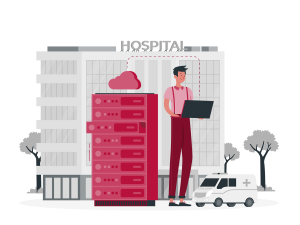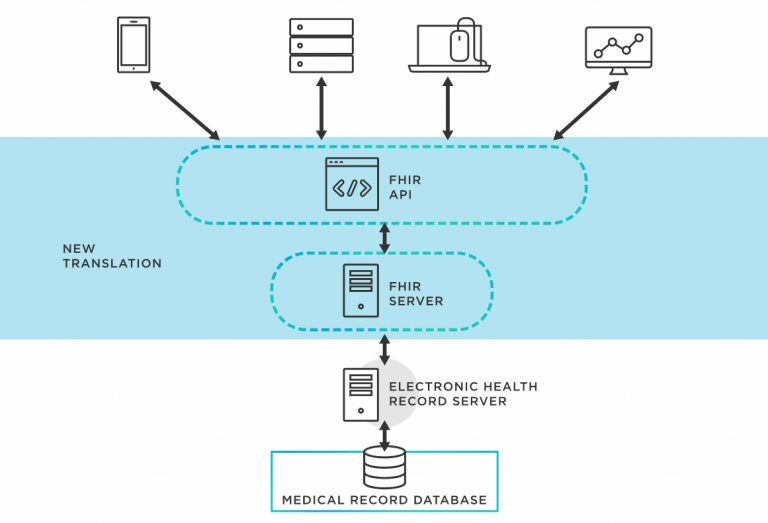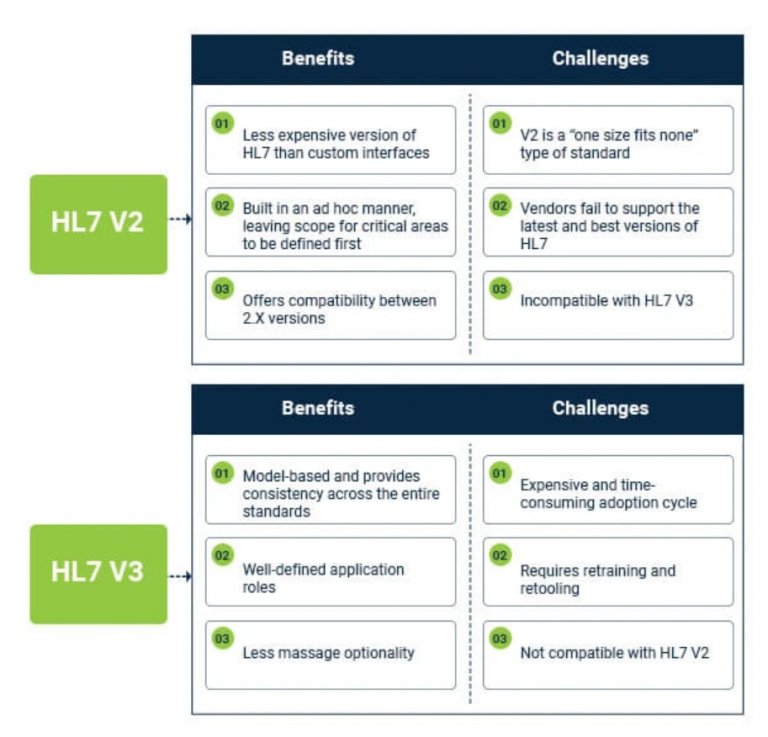
In the rapidly evolving world of healthcare, seamless and secure data exchange is a critical factor in delivering efficient and effective patient care. One standard that has emerged as a vital component of healthcare information exchange is Health Level Seven International (HL7).
Understanding the fundamentals of HL7 is essential for anyone involved in healthcare IT and data management, as it plays a significant role in the interoperability of systems and the sharing of vital patient information. As a leading Seattle-based healthcare software development company, Itirra is well-versed in the nuances of HL7 and is committed to helping organizations navigate the complex landscape of healthcare data communication.
In this article, we will explore what HL7 is, along with its advantages and disadvantages, to help healthcare professionals make informed decisions about leveraging this technology in their organizations. We will dive into the technical aspects of HL7, demystify its inner workings, and offer insights into its potential impact on healthcare organizations.
What is HL7?
Health Level Seven International (HL7) is a set of standards, formats, and protocols designed to facilitate the exchange, integration, sharing, and retrieval of electronic health information (EHI) between different healthcare systems and applications. Established in 1987, HL7 has become one of the most widely adopted standards in the healthcare industry, enabling seamless communication among various healthcare providers, vendors, and organizations.
HL7 provides a framework for the development of messaging standards that support the exchange of structured healthcare data, such as patient demographics, clinical observations, and diagnostic test results. The organization has developed numerous versions of its standard, the most commonly used being HL7 Version 2 (HL7 V2) and HL7 Version 3 (HL7 V3). More recently, HL7 has introduced Fast Healthcare Interoperability Resources (FHIR), a next-generation standard designed to improve the exchange of healthcare information using modern web technologies.
At its core, the purpose of HL7 is to ensure that healthcare systems can communicate effectively with one another, regardless of the underlying technology or software in use. By adopting HL7 standards, healthcare providers can better coordinate patient care, improve clinical workflows, and streamline the process of sharing critical health information across different platforms and organizations.

What are the advantages of HL7?
The adoption of HL7 standards in healthcare has several notable advantages, which have contributed to its widespread acceptance and use across the industry. These benefits include:
Interoperability
HL7 standards enable seamless communication and data exchange between various healthcare systems and applications, fostering greater interoperability among different platforms. This streamlined communication allows healthcare providers to access and share patient information more efficiently, ultimately leading to better patient care.
Improved patient care
With HL7 standards in place, healthcare providers can access a comprehensive view of a patient’s medical history, including previous diagnoses, test results, and treatment plans. This holistic view enables healthcare professionals to make more informed decisions and provide more accurate, timely, and personalized care to their patients.
Enhanced data accuracy
HL7 standards support the transmission of structured healthcare data, which can help reduce data entry errors and inconsistencies. By using a standardized format for data exchange, healthcare providers can ensure that critical information is accurately communicated between different systems, minimizing the risk of errors and miscommunications.
Increased efficiency
The use of HL7 standards can lead to more efficient clinical workflows, as healthcare providers can quickly access and exchange patient information without manual intervention. This improved efficiency can save time and resources, allowing healthcare professionals to focus on providing high-quality patient care.
Cost savings
By implementing HL7 standards, healthcare organizations can reduce the costs associated with custom integration projects, as HL7 provides a standardized framework for data exchange. This can result in significant cost savings and a more streamlined approach to healthcare information management.
Scalability
As healthcare organizations grow and evolve, HL7 standards can help ensure that their systems remain interoperable and compatible with new technologies and applications. This scalability can be particularly beneficial for organizations looking to expand their services, adopt new technologies, or collaborate with other healthcare providers.
Global acceptance
HL7 is widely recognized and accepted worldwide, making it easier for healthcare organizations to collaborate and exchange information across international borders. This global acceptance can help facilitate international research, collaboration, and the development of new healthcare solutions.

What are the disadvantages of HL7?
Despite its numerous advantages, there are also some challenges and limitations associated with the use of HL7 standards in healthcare, including:
Complexity
HL7 standards can be complex and challenging to implement, especially for organizations with limited technical expertise or resources. This complexity can lead to longer implementation timelines and the potential for errors during the integration process.
Inconsistencies between versions
There are multiple versions of HL7 standards, with significant differences between them, such as HL7 V2, HL7 V3, and FHIR. These inconsistencies can create challenges when integrating systems that use different versions of the standard, requiring additional effort and resources to bridge the gaps.
Customization challenges
While HL7 provides a standardized framework for data exchange, individual healthcare organizations often have unique requirements and workflows that may necessitate customization. Customizing HL7 standards can be time-consuming and costly, potentially negating some of the benefits associated with using a standardized approach.
Vendor variability
Even though HL7 is a widely accepted standard, the way it is implemented by different vendors can vary significantly. This variability can create challenges when integrating systems from different vendors, as organizations may need to address incompatibilities and other issues stemming from these variations.
Ongoing maintenance
The maintenance and updating of HL7 standards can be resource-intensive, as organizations need to continually adapt their systems to accommodate changes in the standard and ensure ongoing compatibility with other systems.
Training and expertise
Implementing and managing HL7 standards requires a certain level of expertise and knowledge, which may be lacking in some healthcare organizations. This can create a need for additional training and hiring specialized staff, adding to the overall cost and complexity of adopting HL7 standards.
Slow adoption of newer standards
While HL7 continues to improve new standards, such as FHIR, the healthcare industry can be slow to adopt these newer technologies. This slow adoption can limit the potential benefits of more advanced standards and hinder the industry’s progress toward greater interoperability and data exchange.
Despite these disadvantages, the benefits of HL7 standards often outweigh the challenges for many healthcare organizations. By carefully considering the specific needs and resources of their organization, healthcare leaders can make informed decisions about whether to adopt HL7 standards and how best to implement them to achieve their goals.
The future impact of HL7 on healthcare organizations
As the healthcare landscape continues to evolve, HL7 standards will undoubtedly play a critical role in shaping the future of healthcare organizations. Here are some of the potential impacts HL7 standards may have on the industry moving forward:
Continued adoption of FHIR
Fast Healthcare Interoperability Resources (FHIR) represents the latest advancement in HL7 standards, offering a more modern, web-based approach to healthcare data exchange. As FHIR continues to gain traction and support from major industry players, healthcare organizations can expect to see increased adoption and integration of this standard, further improving interoperability and data-sharing capabilities.
Enhanced collaboration and data sharing
As HL7 standards become even more widely accepted and adopted, healthcare organizations will be better equipped to collaborate and share data with one another. This enhanced collaboration can lead to more effective patient care, improved clinical workflows, and the development of innovative healthcare solutions.
Greater focus on security and privacy
With the increasing prevalence of electronic health information exchange, concerns about data security and patient privacy will remain at the forefront. HL7 standards will need to continue to evolve to address these concerns and ensure that sensitive patient information is protected and exchanged securely.
Accelerated digital transformation
As healthcare organizations continue to embrace digital transformation and adopt new technologies, HL7 standards will play a pivotal role in facilitating the integration of these technologies into existing healthcare ecosystems. This accelerated digital transformation will drive innovation and efficiency, ultimately benefiting both healthcare providers and patients.
AI and machine learning integration
The growing interest in artificial intelligence (AI) and machine learning within the healthcare industry presents new opportunities for leveraging HL7 standards. By providing a standardized framework for data exchange, HL7 can help facilitate the integration of AI-powered tools and applications, enabling organizations to harness the potential of these cutting-edge technologies.
Improved patient engagement
As HL7 standards promote the seamless exchange of healthcare data, patients will have better access to their medical records and health information. This improved access can lead to greater patient engagement, empowering individuals to take a more active role in managing their healthcare and making informed decisions about their care.
HL7 standards will continue to play a vital role in shaping the future of healthcare organizations by promoting interoperability, driving innovation, and enhancing patient care. As the industry evolves, it will be crucial for healthcare providers to monitor developments in HL7 standards and adapt their systems and processes accordingly to harness the full potential of these transformative technologies.
Conclusion
HL7 has emerged as a critical component of healthcare information exchange, promoting interoperability and efficient communication among various systems and applications. Despite some disadvantages and challenges associated with its implementation, the advantages of HL7 standards have led to widespread acceptance and adoption within the healthcare industry.
Ultimately, the successful adoption and integration of HL7 standards can drive innovation, enhance patient care, and streamline healthcare data exchange, ensuring a more connected and efficient healthcare ecosystem for all stakeholders involved.
As a leading Seattle-based healthcare software development company, Itirra is committed to staying at the forefront of advancements in HL7 standards and helping organizations make the most of these powerful tools. With Itirra’s expertise and comprehensive services, healthcare organizations can successfully adopt and integrate HL7 standards, driving innovation, enhancing patient care, and streamlining healthcare data exchange.
